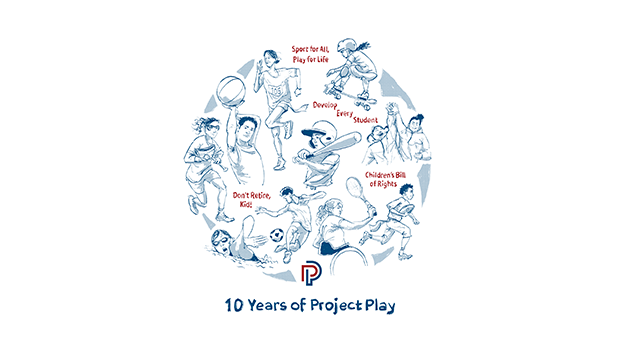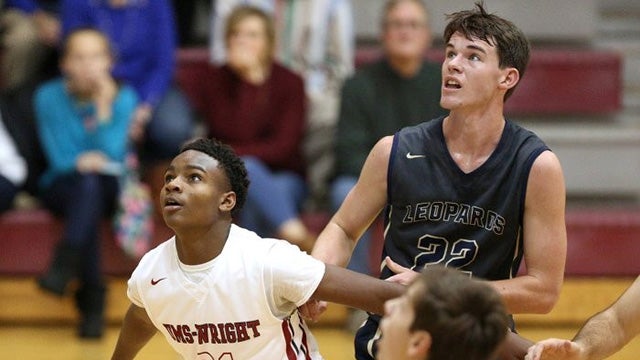
Robin Schepper, left, speaking at the Project Play Summit in Washington, DC.
On February 26, the Sports & Society Program gathered 25 leaders from health, recreation, sport, education, and other sectors in a roundtable on physical literacy. Hosted at Aspen Institute offices in Washington, DC, the day after the Project Play Summit and following the recent release of “Sport for All, Play for Life: A Playbook to Get Every Kid in the Game,” in which physical literacy is highlighted as the foundation of an aspirational model for youth sports, the roundtable is part of the program’s larger effort to develop a plan for physical literacy in the United States.
After growing up as a city girl, I moved from the nation’s capital to a ski town in the Rocky Mountains. Here in Steamboat Springs, people are always asking me, “What’s it like leaving Washington, DC, and moving to Steamboat Springs, Colorado?” The starkest difference is how a conversation starts in these two very different places. When I moved to Steamboat, I was asked, “What do you do?” As a person who worked in DC for almost 20 years, I would answer, “I am a health and wellness consultant, specializing in obesity prevention.” The quizzical looks were priceless, and were followed by the statement, “No, what do you do — ski, board, hike, snowshoe?” Immediately, a smile would appear on my face as it dawned on me that they were interested in how I moved my body, not in what I did for my day job.
Imagine if we all valued our physical literacy as much as our intellectual ability. Last week, I attended the Project Play Summit in Washington, and was able to present the concept of physical literacy to the audience (watch my presentation). But what is physical literacy and why should we care? Physical literacy can be defined as the ability, confidence, and desire to be physically active for life. If you have the foundation of physical literacy you can participate in sports, recess, physical education and general outdoor play for the rest of your life. I see it everyday in Steamboat, when 75-year-old women ski down the mountain laughing like they were still 10 years old.

Over the years, schools around the country have cut P.E. and recess to focus on reading, writing, and arithmetic. While academic literacy is important to succeed in life, we also need to know how to move our bodies. We cannot function without our bodies and many of the skills some of us take for granted — jumping, rolling, skipping — are learned at a very early age. A video clip on physical literacy from Sport Wales says it best: if we don’t learn early, we will end up as coach potatoes.
Not being physically literate is already having ramifications. Today’s youth lack fundamental movement skills. The US Army had to change its 10-week basic training course because new recruits did not know how to balance, tuck, roll, and fall; they also had lower bone density and were getting more injuries than recruits 20 years ago.
If physical literacy is the goal, then sports, P.E., recess, and outdoor play are the tactics to help us achieve that goal. Other countries have embraced this concept: Wales, Ireland, Australia, New Zealand, and Canada to name a few. Canada created a great concept called Sport for Life, which establishes physical literacy as the foundation for all sport.

Professional soccer freestyler Indi Cowie at the Project Play Summit.
In the Bipartisan Policy Center’s (BPC) “2012 Lots to Lose Report: How America’s Health and Obesity Crisis Threatens America’s Future,” we recommended that the US embrace physical literacy and that every institution play a role in promoting it. Schools play a role for P.E. and recess, but other institutions can help promote physical literacy: after-school programs, medical institutions, health insurers, business, governments, nonprofits, and academia.
To further this effort, the Aspen Institute Project Play initiative has a working group on physical literacy chaired by Colin Hilton of the Utah Legacy Foundation, which has integrated physical literacy into its programming. The BPC and numerous other organizations from the US and Canada are working together to create a physical literacy plan for the United States. We hope to share that plan later this year and enlist as many organizations as possible to help promote and implement the concept.
My dream is that in the not-too-distant future, whenever someone asks what you do, your answer will describe how you stay physically literate and active.
Robin Schepper is senior advisor to the Prevention Initiative at the Bipartisan Policy Center and a member of the Aspen Institute Project Play Working Group on Physical Literacy.
RELATED CONTENT:

